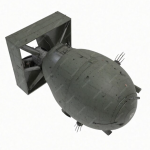If you’ve ever struggled with short power cords on your networking switches, smart home hubs, or Ethernet accessories, it’s time to invest in a suitable power extension cord. But with so many options on the market boasting different lengths, gauges, and connectors, how do you select the ideal cord for your specific devices?
This comprehensive guide will walk you through the key factors you need to know in choosing a power extension cord for various switch setups.
Follow these tips to stretch your short switch power cables seamlessly and enjoy peace of mind knowing your gear has safe, reliable access to electricity.
1. Evaluate Placement, Length & Mobility Requirements
Start by examining where your switches and devices are located and measure approximately how much additional switch power cord length you need. Make sure to account for desired slack and mobility, too. If items are housed inside cabinets or flushed to walls, the extra versatile length allows pulling equipment out without unplugging during maintenance.
Use a soft measuring tape to map switch placement about available outlets and determine the required extended reach. Having this distance overview visual lets you gauge the following:
- Minimum cord length for basic functionality
- Ideal slack length for effortless accessibility
- Maximum workable length before voltage drop concerns
This mental layout also indicates which direction cords should extend – whether reaching sideways behind a desk, diagonally across to adjacent walls, or straight back along the floor.
Document measurements and outlet locations on a room schematic you can reference when shopping for different extension options.
2. Identify Total Power Requirements
To pick a suitable capacity extension, it’s critical to understand your switch gear’s electrical load demands. Examine device markings or manual specs to identify key figures:
- Wattage – Indicates sustained power draw under regular operation
- Amperage – Defines peak current flow at maximum
- Voltage – Optimal AC input range
For example, a standard 24-port network switch may use 180 watts at 0.6 amps with a 120-240 voltage input range.
Calculating the total system draw gives the whole picture. Adding up daisy-chained switches’ wattages and powered appliances gives you the minimum baseline extension wattage—a factor around a 20% buffer for gear fluctuations or future upgrades.
Using addon meters to analyze accurate plug loads helps avoid undersizing. With demanding electronics, go robust.
3. Choose a Suitable Power Gauge
The gauge or thickness of an extension cord’s inner wiring majorly impacts safety and efficiency. Lower gauge numbers indicate thicker wires can sustain higher electric loads without heat damage or power loss along the line.
Here are common gauges for switch applications:
- 16 gauge – For compact 5V switches under 5 amps
- 14 gauge – For most PoE switches pulling 12-20+ amps
- 12 gauge – For servers and high-drain devices drawing over 15 amps
Matching cord gauges to cumulative equipment amperage prevent tripped breakers and charging issues.
Know that length impacts wire resistance, too. Under 50 feet, it uses 16 gauge, while 12 gauge better handles over 100 foot runs for comparable voltage transfer.
4. Ensure Connector & Outlet Compatibility
Extension cords outfitted with standard NEMA 5 receptacles conveniently accept most 3-prong plugs. However, some switches may require special flat NEMA 5-15P or NEMA L5-20P inputs. Before buying, double-check your switch AC adapter interface and select a like-for-like extension socket shape. Mismatched polarity or omitted ground prongs disrupt vital protections from electric shock.
The outlet noodle shape must match the switch shape!
Dual accessory outlets allow direct plugging in devices instead of chaining dangerous multi-outlet converters. Though verified, added ports provide adequate amperage for additional gear without overload.
5. Evaluate Extra Convenience & Protection Features
Beyond baseline compatibility, certain additional extension cord features can improve longevity and functionality for switch setups like:
- Lighted ends – Quickly spot live plugs in dark rooms
- Flat design – Lays flush without tangled coils
- Right-angled head – Makes plugging behind desks easier
- Surge protector – Prevents voltage spikes from frying gear
- Twist lock plugs – Avoid accidental disconnections
- Extra outlets – Directly plug accessories into the cord
There are also super flexible types with trainer-like power cords for running tightly against baseboards behind hard-to-access spots. The range of unique options offers solutions tailor-made for complex electrical challenges.
6. Adhere to the Electrical Code for Risk Minimization
While very functional solutions, improper extension cords can increase fire or electric shock hazards. As temporary measures, limit extension grouping not to exceed:
- Two cords chained per outlet
- ten total feet coiled before use
- 50 feet maximum extended length
7. Take Special Precautions for POE Switch Setups
POE (Power Over Ethernet) switches require mindfully selecting cords to deliver stable, clean power. Lengthy POE runs to remote cameras or access gear often push voltage drop limitations. Over 15-20 feet, upgrade thicker gauge choices rated for the entire switch PSU wattage, even if port use remains low for now. This avoids power brownouts disrupting network connectivity, which thin wires can’t effectively support.
For best reliability:
- Commit separate circuits solely for POE hardware whenever feasible
- Consider active POE injectors/splitters to regenerate extended feeds
- Opt for outdoor insulation and shielded Ethernet to prevent electrical interference in exposed POE installations
Bottomline
We hope mapping out key decision points for comparing extension cord load capacity, reach, wiring gauge, environmental protection, and special functions clears up selecting the suitable model for your specific switches.
Choosing a long cord to neatly route equipment that maintains electrical standards enables flexible repositioning of desk layouts anytime. Invest in durable, sufficient gauge extensions suited for power-hungry gear rather than bare household lamps to get wiring configurations right the first time.
Focus on safety by confirming listing marks and following best practices for placement so switch uptimes aren’t perilous. Plan optimized extension runs and cabling flows to reclaim long-term peace of mind (and under-desk real estate!).





